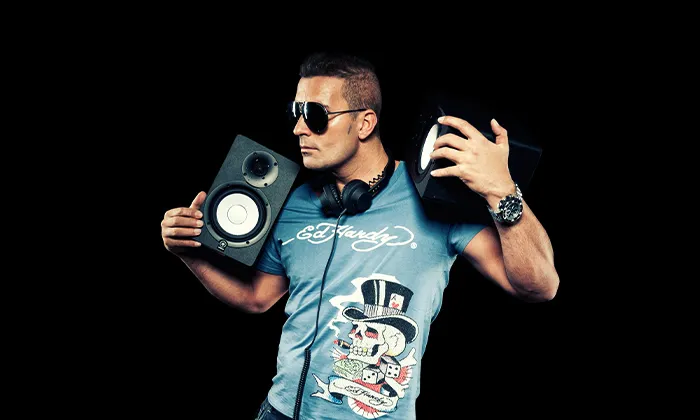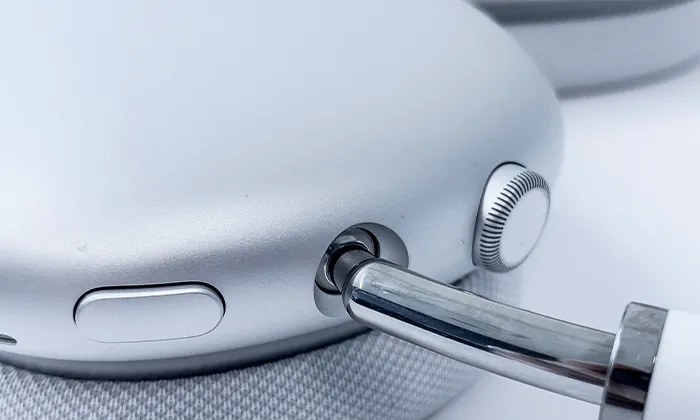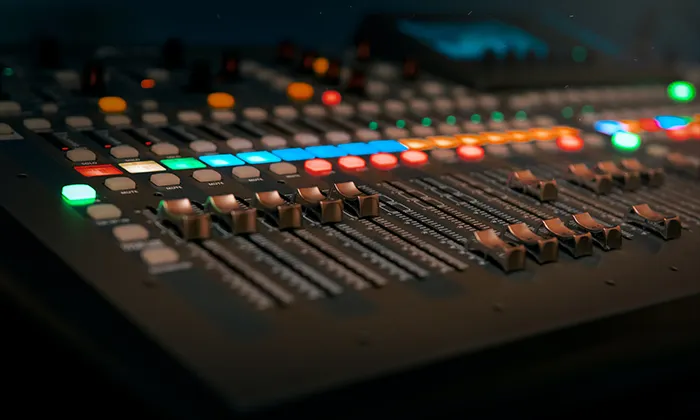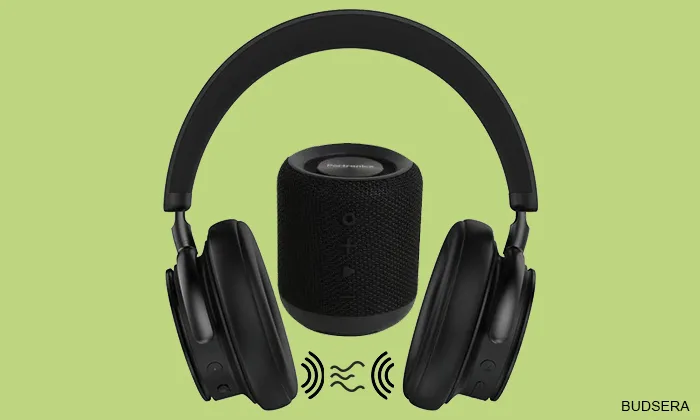It’s not surprising that some inquisitive minds have questioned if they can convert their dependable headphones into potent speakers in a world where technology is constantly expanding the bounds of what is possible.
After all, wouldn’t it be incredible to have speaker immersion without having to make a major audio system purchase? Although using an amplifier to turn your headphones into speakers is conceivable, it’s crucial to set realistic expectations.
In this post, we’ll explore the intriguing topic of using headphones as speakers, explaining how it’s done, highlighting its advantages, and discussing its drawbacks.
So let’s go on this audio adventure and find out if your headphones can actually accept their new role as speakers.
Material Required
To transform your headphones into speakers, you’ll need a few essential materials. Here’s a breakdown of what you’ll require:
- Audio Amplifier
- Headphone Jack
- Cables and Wires
- Electric Tape
Audio Amplifier
An audio amplifier is a key component that enables headphones to function as speakers. It boosts the audio signal, providing the necessary power to drive the speakers.
A high-quality amplifier will ensure better sound quality and volume output, enhancing your overall listening experience.
Headphone Jack
You’ll need a headphone jack to establish the connection between your headphones and the amplifier. The headphone jack typically features a 3.5mm connector, which is a standard size for most headphones.
It allows for easy and secure connectivity, ensuring the audio signal is transmitted effectively.
Cables and Wires
To establish the necessary connections, you’ll require appropriate cables and wires. These may include audio cables with 3.5mm connectors, speaker wires, and potentially other connectors depending on the specific amplifier and speakers you are using.
It’s important to use high-quality cables and wires to maintain signal integrity and reduce the risk of interference.
Electric Tape
By using electric tape to carefully wrap and secure the cables and wires, you can ensure a reliable and durable setup for your converted headphones-turned-speakers.

How to Turn Headphones into Speakers?
To turn your headphones into speakers, follow these step-by-step instructions:
Disassemble the Headphones
Carefully disassemble the headphones by removing the ear cups and any screws that may be holding them together.
This step may vary depending on the design of your headphones, so refer to the manufacturer’s instructions if needed.
Disconnect the Speakers
Locate the wires connecting the speakers to the headphones. These wires are responsible for transmitting the audio signal. Disconnect them from the headphones, ensuring a clean separation.
Connect the Speakers with a 3.5mm jack
For Wired Headphones
If you already have wired headphones with a 3.5mm jack then Cut the wire of the headphones, leaving a 2 to 3-inch margin from the jack. This will give you the necessary wire length to work with.
For Wireless Headphones
If you have wireless headphones then Use a 3.5mm audio cable.
Isolate the wires
Carefully isolate the wires you cut from the headphone or the audio cable. Strip the insulation off the ends of the wires to expose the metal conductors.
Prepare the speaker wires
Similarly, isolate the wires of the speakers you intend to connect. Strip the insulation off the ends of the speaker wires.
Connect the wires
Match the positive wire (typically red) from the headphone or audio cable to the positive wire of the speakers. Likewise, connect the negative wire (usually black) to the negative wire of the speakers. Twist the exposed ends of the wires together securely.
Secure the connections
Use electric tape to wrap each wire connection separately. Begin by wrapping the positive wire connection, making sure to cover it completely with tape.
Then proceed to wrap the negative wire connection. The electric tape will provide insulation and keep the connections secure.
Test The Sound
After completing the previous steps, you’re ready to test the sound of your headphones-turned-speakers. Follow these instructions to complete the process:
1. Take the 3.5mm jack, which you have just connected to the speakers, and plug it into the appropriate input on the audio amplifier. This input is typically labeled as “Line In” or “Aux In” on the amplifier.
2. Ensure that the audio amplifier is powered off before connecting it to a power source. Double-check that all the connections are secure and the wires are properly insulated.
3. Once you have confirmed the connections, turn on the audio amplifier.
4. Now, play some audio through your device that is connected to the amplifier. It could be music, a movie, or any other audio source.
5. Listen carefully for the sound coming from your headphones-turned-speakers. If everything is connected correctly, you should hear the audio playing through the speakers.
6. Adjust the volume and other settings on the amplifier to achieve your desired sound level and quality.

Is It Possible to Turn Any Headphones into Speakers?
While it is technically possible to turn many headphones into speakers, it’s important to note that not all headphones are suitable for this conversion.
The feasibility of transforming headphones into speakers depends on various factors, including the design, drivers, and impedance of the headphones.
Headphones specifically designed for listening to audio in close proximity to the ears are optimized for delivering sound directly to the listener.
They are engineered with smaller drivers and may lack the necessary power and dispersion capabilities required for functioning as traditional speakers.
On the other hand, some headphones designed for professional or studio use may have larger drivers and more robust construction.
These types of headphones may offer better potential for converting into speakers, as they are designed to handle higher power levels and produce a wider soundstage.
Advantages of Headphone-To-Speaker Conversion
Converting headphones into speakers can offer several advantages, depending on the context and personal preferences of the user. Here are some potential benefits of headphone-to-speaker conversion:
Cost-Effective Solution
Converting headphones into speakers can be a cost-effective alternative to purchasing dedicated speakers. If you already own a quality pair of headphones, repurposing them as speakers can save you money while still allowing you to enjoy audio in a different format.
Space Saving
For those with limited space or a preference for minimalist setups, using converted headphones as speakers eliminates the need for additional speaker units. This can help declutter your workspace or living area while still enjoying audio playback with satisfactory quality.
Portability
Converted headphones-turned-speakers offer portability, allowing you to enjoy audio in different settings. You can easily transport your headphones and amplifier, making them ideal for on-the-go listening or small gatherings where a portable speaker solution is needed.
Better Soundstage
Headphones designed for personal listening typically provide an intimate and detailed soundstage. When repurposed as speakers, they can offer a unique and focused soundstage that may differ from traditional speakers, providing a different listening experience for audio enthusiasts.
Easier Setup
Converting headphones into speakers generally involves a simpler setup compared to traditional speaker systems. With the right connections and amplifier, you can quickly transform your headphones into speakers without the need for complex wiring or additional equipment.
Limitations of Headphone-to-Speaker Conversion
While headphone-to-speaker conversion can offer certain advantages, it’s important to be aware of the limitations that come with this transformation. Here are some potential limitations to consider:
- Sound Quality
- Volume and Power
- Frequency Range
- Durability
Sound Quality
While headphone-to-speaker conversion can provide improved sound quality compared to built-in speakers on devices, it may still not match the performance of dedicated speaker systems.
Headphones are designed for close listening, while speakers are designed to fill a room with sound. The conversion process may result in a compromise in terms of soundstage, frequency response, and overall audio fidelity.
Volume and Power
Headphones typically have lower power requirements compared to speakers. When converted, the resulting sound may not reach the same volume levels or have the same level of impact as dedicated speakers.
Amplification may be necessary to achieve adequate volume, which can add complexity and cost to the setup.
Frequency Range
Headphones and speakers are designed with different frequency responses. Some headphones may have a limited frequency range, especially in the lower and upper ends.
When used as speakers, these limitations may become more apparent, affecting the overall audio reproduction.
Durability
Headphones are not built to handle the same power and stress levels as speakers. The drivers and internal components may not withstand prolonged use as speakers, potentially leading to decreased durability or even damage over time.
Facts and Data about Using Headphones as Speakers
Using headphones as speakers can be an interesting concept, but it’s essential to be aware of some crucial facts and data regarding this practice. Consider the following information:
Sound Pressure Levels
The average headphone driver can produce sound pressure levels of up to 110 decibels (dB), which is comparable to the noise generated by a lawnmower. This emphasizes the potential intensity of sound when using headphones as speakers.
Hearing Damage Risk
Prolonged exposure to sound levels exceeding 85 dB can lead to hearing damage. Using headphones as speakers increases the risk of exposing your ears to higher sound levels, emphasizing the importance of caution.
Hearing Protection Measures
To safeguard your hearing while using headphones, several measures can be taken:
- Wearing earplugs or earmuffs can help attenuate the sound and protect your ears from excessive noise exposure.
- Lowering the volume to a comfortable level reduces the risk of damaging your hearing.
- Taking breaks from listening to loud music allows your ears time to rest and recover from extended exposure.
By being mindful of these facts and taking appropriate precautions, you can enjoy the benefits of using headphones as speakers while prioritizing the health and well-being of your hearing.

Factors affecting sound quality in Headphone-to-speaker conversion
Several factors can affect the sound quality in headphone-to-speaker conversion. Here are some key factors to consider:
Headphone Quality
The quality of the original headphones used for the conversion plays a significant role. Higher-quality headphones with better drivers and sound reproduction capabilities are more likely to deliver satisfactory sound when repurposed as speakers.
Headphones designed for studio or professional use may have an advantage in terms of sound quality compared to consumer-grade headphones.
Amplifier Quality
The choice of amplifier is crucial in headphone-to-speaker conversion. A high-quality amplifier can provide sufficient power and voltage to drive the speakers effectively, resulting in improved sound quality.
Investing in a reliable amplifier with suitable specifications can have a positive impact on the overall sound performance.
Speaker Quality
The speakers used in the conversion process greatly influence the sound quality. Opting for speakers with good frequency response, balanced drivers, and suitable impedance can contribute to better sound reproduction.
Higher-quality speakers are more likely to provide a satisfying audio experience with accurate and detailed sound.
Impedance Matching
Matching the impedance of the headphones, amplifier, and speakers is important for optimal sound quality. Mismatched impedance can lead to issues such as distortion, poor frequency response, or insufficient power transfer.
Ensuring compatibility between the impedance ratings of these components is crucial for achieving the best possible sound output.
Wiring and Connections
The quality of wiring and connections used in the conversion process can affect sound quality. High-quality cables with good conductivity and shielding can minimize signal loss and interference, resulting in cleaner and more accurate audio reproduction.
Properly securing and insulating the connections between the headphones, speakers, and amplifier is essential to avoid any degradation in sound quality.
Final Thoughts
Turning your headphones into speakers can be an intriguing DIY project that offers certain advantages such as improved sound quality, portability, cost-effectiveness, and customization options.
However, it’s important to be aware of the limitations and factors that can affect the sound quality in the conversion process. Consider the quality of your headphones, the amplifier used, the speakers chosen, impedance matching, and the acoustic environment.
By understanding these factors and making informed decisions, you can enhance your audio experience and enjoy the unique benefits of headphone-to-speaker conversion.
- Charging Bluetooth Headphones During Use: Is It Possible? - January 9, 2024
- Why Over-Ear Headphones Best for Hearing Health? (7 Reasons) - December 12, 2023
- Fixing the Bose Earbuds Not Charging in Case Problem: Solutions That Work - November 24, 2023

NICE! Such a awesome information about “can-you-turn-your-headphones-into-speakers”. I like it. Thanks for sharing.